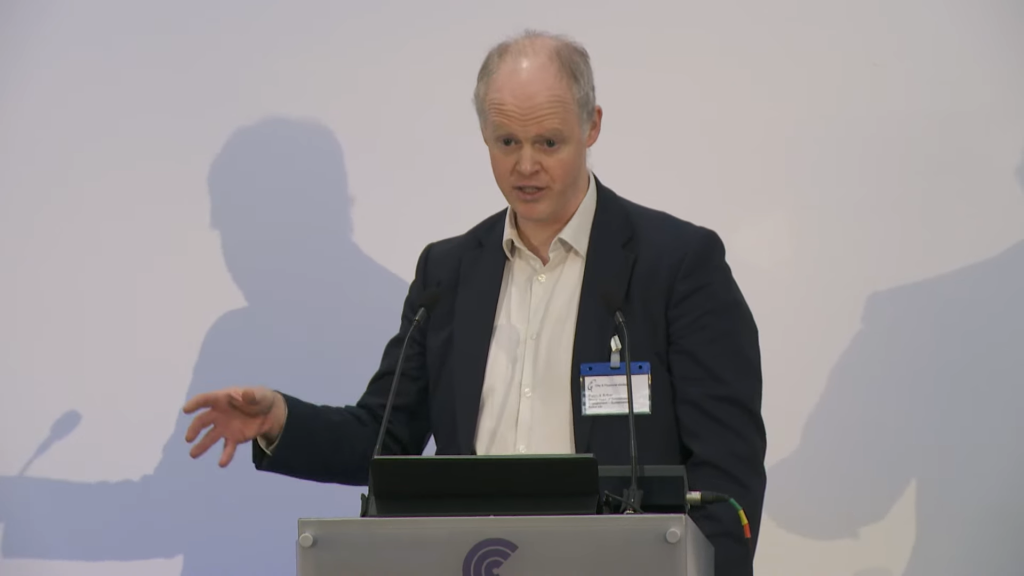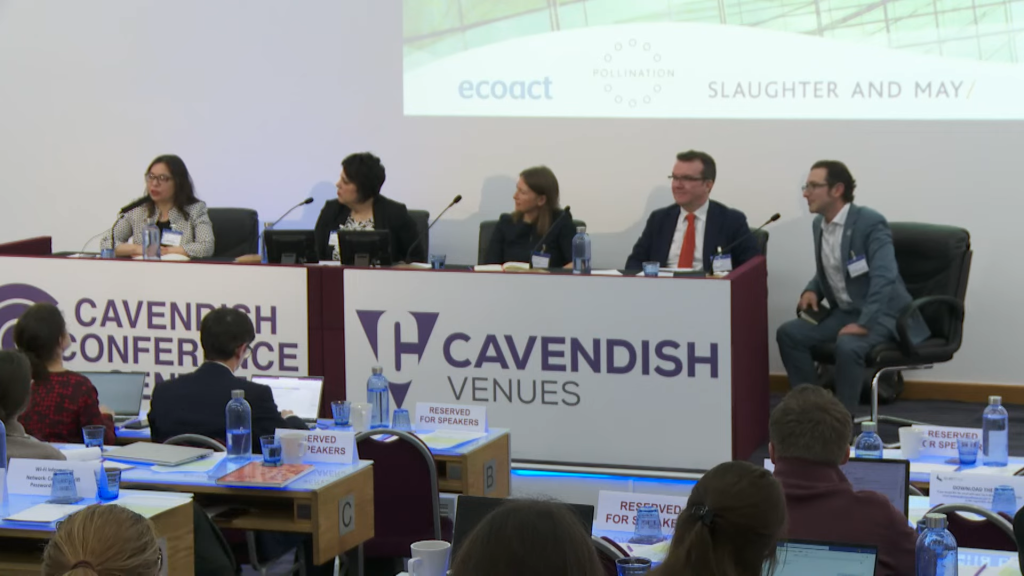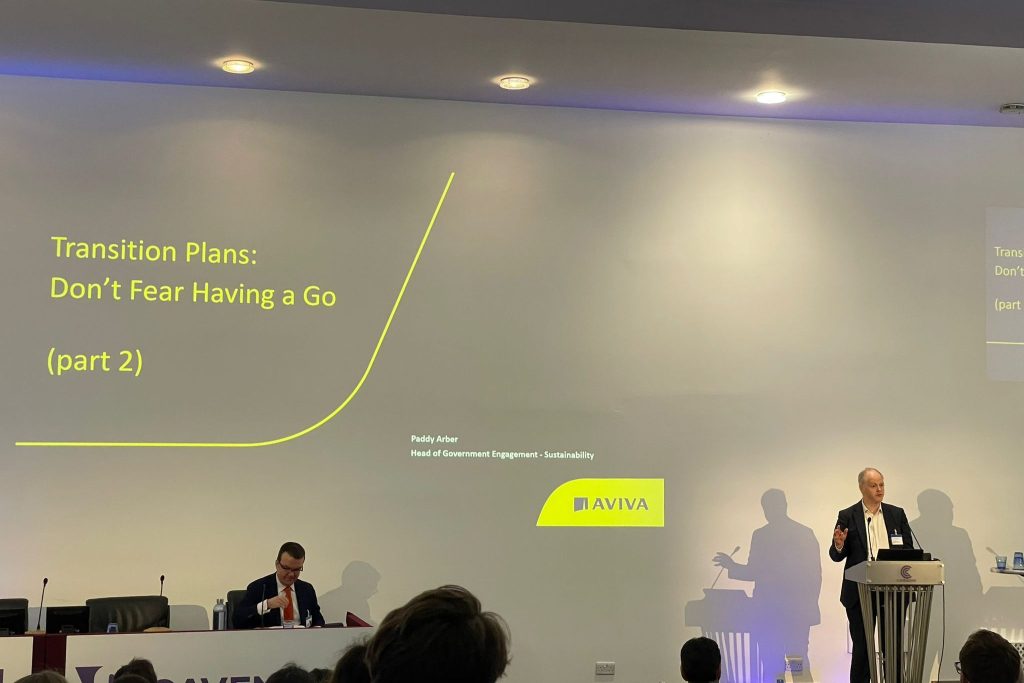Shifting from design to implementing the Transaction Plan Taskforce (TPT) Framework and sector guidance was the focus of the second City & Financial Annual Summit on Climate Transition Plans for Financial Institutions and Listed Companies.
Patrick Arber, Group Head of Government Engagement – Sustainability at Aviva reiterated his advice from the inaugural summit in 2023 – “don’t fear having a go”. He said the phrase is still relevant today as he appreciates that having to prepare a transition plan “is not easy”. He acknowledged that many firms are now on to their second one, turning from a one-off task to to becoming “a part of how we do business like TCFD” (TCFD recommendations are voluntary and not yet required to by regulation but many firms are adhering in response to investor request).
Policymakers and regulators are advocating international interoperability of the transition finance framework. Arber said, there’s no need to reinvent the wheel and the finance sector could help achieve international convergence by backing transition finance internationally. “We need to support our regulators and our policymakers and encourage them,” he added.

Photo: City & Financial Global
Arber advised the conference to be “friendly to regulators, not adversarial”. A transition plan “gives opportunity for a structured dialogue” with your regulator and to foster mutual trust. This was echoed by Sacha Sadan, Director of ESG at the FCA, who encouraged communication with the regulator.
“When we reconvene next year, more transition plans will be prepared by more major firms,” Arber told the conference. Adding that the better the transition plans, the more use they will be to investors, and with the UK setting the standard, more progress in international convergence.
“This is a future worth striving towards,” said Arber.
How investors and other stakeholders will use transition plans
David Harris, Incoming Chair, The Future of Sustainable Data Alliance (FoSDA), and Head of Sustainable Finance Strategic Initiatives & Partnerships, LSEG, introduced the session on using transition plans, and set the scene. “Climate change is already revolutionising industries. We are now living through the green industrial revolution.” He explained, that in the power sector, investment into clean products overtook investment into fossil fuels four years ago; the lighting sector has transitioned, “we’re all using LED lights”; and the value of Tesla is almost the same as the rest of the auto industry put together.
He continued: “Every year we do a survey of pensions funds and asset owners around the world, with typically 300 asset owners responding. In 2019 we hit the point where the majority of asset holders globally were already integrating ESG or intending to do so. Now that’s at over 80%.” He added, “this isn’t a bit of the market. This is just the market.”

In the US, even though there is an obvious ESG pushback, Harris noted, that “still by far the majority of asset owners are shifting and reallocating capital on the basis of sustainability”.
Monica Filkova CFA, Head of Climate and Nature Investment Strategy, UK IWR Investments, Aviva, said that as an asset owner, you need to understand risks and the opportunities to deliver on investments. She said we need to define what sustainable looks like and work with asset managers to find out how to identify those opportunities.
“The role of transitioning in face of climate and nature emergencies is vital and you need individuals to tell you what their strategies are,” she added. The role of a transition plan is to articulate the strategies of the actors, for example:
- What are the investor companies doing?
- What are their assets doing?
- What are our asset managers doing?
- How are the asset managers going to help us to transition to our new economy?
- How do we mitigate risks, build resilience and social justice, resolve issues that we created with biodiversity loss, deterioration of natural capital?
“The transition plan to us is the gateway for understanding what the strategies are like out there and make good investment decisions,” said Monica Filkova.
Sepi Roshan, Senior Analyst, Accounting, Audit and Disclosure, Carbon Tracker, noted that the conference had heard a lot of “c-words”: collaboration, complexity, clarity. She said, “our ‘c’ is check disclosures in transition plans for consistency (another c) with non financial and financial information presented in the financial statement of a company”. These disclosures are already required under IFRS requirements and US GAAP.
She acknowledged that no companies have a fully consistent narrative about how they are dealing with energy transition and climate risk. But said, “our role is the messenger, to provide feedback on how it’s happening in the market.”
Regulation and investment
Stephanie Maier, Global Chief Sustainability Officer, GAM Investments said transition plans are regulatory reporting requirements that are transitioning from voluntary TCFD disclosure to mandatory disclosure. She added that both regulation and investment are the main drivers.
Gavin Templeton, Managing Director, Pollination, said it’s a challenge to navigate all of the acronyms and pull together 20 disclosure frameworks for transition plans.
Looking at future concerns, Templeton mentioned “green hushing – clients who are not talking about they are doing because of ESG headwinds particularly in North America. There is massive clamour for good data.”
Final advice from the panel was to understand the regulatory risks for transitioning. If you understand the intention of the regulator then there will be collaboration – dialogue, disclosure and transparency.
Our previous article covered UK policy makers’ and regulators’ expectations of the TPT Framework.


